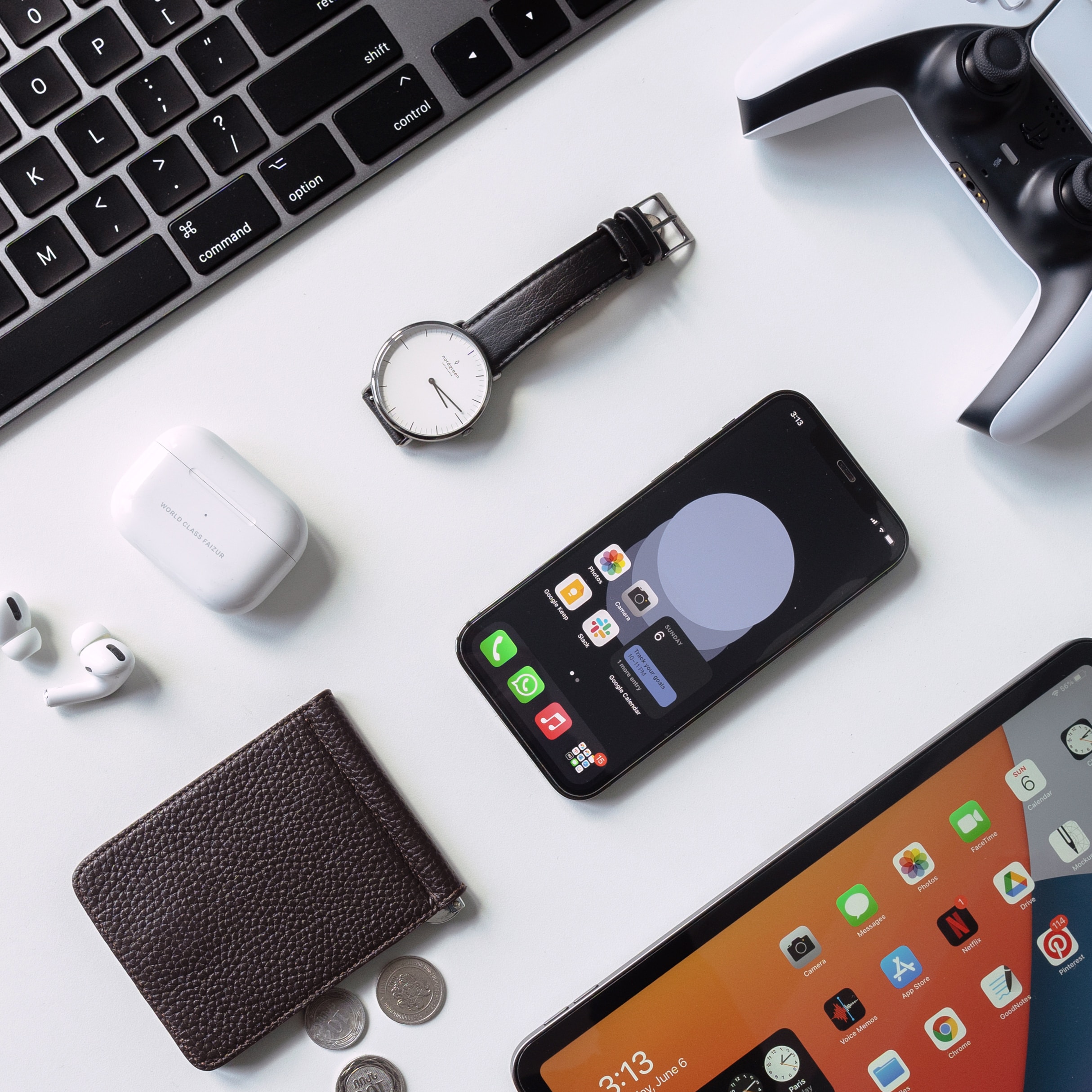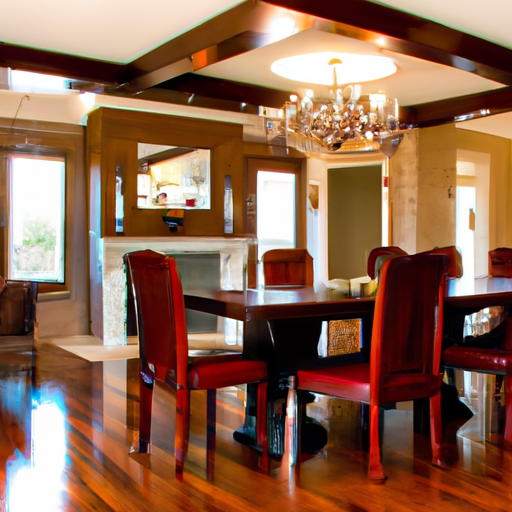
In this article, you will explore the intriguing distinction between home decor and interior design. Have you ever wondered what sets these two disciplines apart? While home decor focuses on the aesthetics and furnishings within a space, interior design encompasses a much broader scope. Join us as we uncover the nuances that differentiate these two art forms and discover how they come together to create harmonious and functional living spaces.
Definition of Home Decor
Home decor refers to the process of arranging and placing various items and objects within a living space to create a visually appealing and personalized atmosphere. It involves the selection, placement, and arrangement of furniture, accessories, colors, patterns, and lighting to enhance the aesthetics and overall ambiance of a home.
Purpose of Home Decor
The purpose of home decor is to transform a house into a warm and inviting space that reflects the personality and style of the occupants. It is about creating a comfortable and pleasant environment that promotes relaxation, happiness, and a sense of belonging.
Components of Home Decor
Home decor encompasses various components that contribute to the overall design and aesthetics of a living space. These components include color and patterns, furniture and accessories, lighting, textures and fabrics. Each element plays a crucial role in creating a harmonious and visually appealing home decor.
Definition of Interior Design
Interior design involves the planning, designing, and implementation of a functional and aesthetically pleasing living space. It encompasses a broader scope than home decor, as it considers not only the visual aspects but also the functionality, safety, and efficiency of the space.
Purpose of Interior Design
The purpose of interior design goes beyond simply decorating a space. It aims to create a well-designed and functional environment that meets the needs and desires of the inhabitants. Interior design takes into account the layout, flow, and utilization of space to enhance its functionality and optimize its potential.
Components of Interior Design
Interior design comprises various components that work together to create a cohesive and well-designed space. These components include spatial planning, materials and finishes, lighting design, and furniture arrangement. By carefully considering these elements, interior designers can transform a space into a harmonious and functional area.

Overlap between Home Decor and Interior Design
While home decor and interior design are distinct fields, they do share some similarities and principles. These similarities stem from the fact that both disciplines aim to create visually appealing and functional living spaces.
Similarities
Both home decor and interior design involve the selection and arrangement of furniture, accessories, color palettes, and lighting to create a cohesive and visually pleasing environment. Both fields also take into account the personal preferences, lifestyle, and needs of the occupants to create a space that reflects their individuality.
Shared Principles
Both home decor and interior design follow similar principles to achieve their goals. These principles include balance, harmony, proportion, and unity. By applying these principles, both home decor and interior design aim to create a visually balanced and harmonious space that appeals to the senses and enhances the overall experience of the occupants.
Differences between Home Decor and Interior Design
While there are some overlaps between home decor and interior design, there are also significant differences that set them apart as distinct disciplines.
Focus
The focus of home decor is primarily on the aesthetic aspects of a living space. It involves the selection and arrangement of furniture, colors, accessories, and lighting to create a visually pleasing and personalized atmosphere. On the other hand, interior design encompasses a broader scope, focusing not only on the aesthetics but also on the functionality, safety, and efficiency of the space.
Scope
Home decor is more limited in scope and typically involves the decoration of existing spaces. It does not involve major structural changes or extensive renovations. In contrast, interior design encompasses the entire design process, including the initial planning, layout, and implementation of a space. It may involve architectural changes, such as modifying walls, adding or removing rooms, or changing the overall layout of a space.
Approach
The approach in home decor is often more informal and personal. It allows individuals to express their creativity and style through the selection and arrangement of various decor elements. Interior design, on the other hand, requires a more strategic and systematic approach. It involves careful planning, analysis, and consideration of various factors to create the most functional and aesthetically pleasing space possible.
Professional Qualifications
Home decor does not typically require formal education or professional qualifications. It is often a do-it-yourself endeavor or something that individuals with a passion for decorating pursue as a hobby. In contrast, interior designers typically undergo formal education and training to obtain the necessary knowledge and skills to design and transform living spaces professionally. They may also need to obtain certification or licensure, depending on the jurisdiction they work in.
Time and Cost Involved
Home decor can be a relatively quick and cost-effective process, depending on the scale and complexity of the project. It allows for more flexibility and can be done gradually over time. Interior design, on the other hand, often requires a more significant investment of time and financial resources. It involves detailed planning, sourcing materials, coordinating with contractors, and overseeing the implementation of the design.

Key Elements of Home Decor
Color and Patterns
Color and patterns play a crucial role in home decor. The choice of colors can impact the overall mood and atmosphere of a space, with warm tones creating a cozy feel and cool tones adding a sense of tranquility. Patterns, whether bold or subtle, can add visual interest and texture to a room.
Furniture and Accessories
Furniture and accessories are essential elements of home decor. The choice of furniture should be both functional and visually appealing, complementing the overall style of the space. Accessories, such as artwork, rugs, and decorative objects, can be used to add personality and enhance the aesthetic appeal of a room.
Lighting
Lighting is a vital component of home decor, as it can greatly impact the ambiance and functionality of a space. Different lighting options, such as overhead lighting, task lighting, and accent lighting, can be used to create different moods and highlight specific areas or features within a room.
Textures and Fabrics
Textures and fabrics add depth and visual interest to home decor. Incorporating different textures, such as smooth, rough, or soft, can create a tactile experience and add a sense of dimension to a space. Similarly, the choice of fabrics for curtains, upholstery, and pillows can contribute to the overall aesthetic and comfort of a room.
Key Elements of Interior Design
Spatial Planning
Spatial planning is a fundamental element of interior design. It involves analyzing the layout and flow of a space to optimize its functionality and efficiency. Interior designers consider factors such as space utilization, traffic flow, and the relationship between different areas to create a well-designed and functional space.
Materials and Finishes
Materials and finishes play a crucial role in interior design. The choice of materials, such as flooring, wall coverings, and countertops, can greatly impact the overall look, feel, and durability of a space. Interior designers consider factors such as durability, maintenance, and aesthetics when selecting materials and finishes for a design project.
Lighting Design
Lighting design is an essential element of interior design. It involves the strategic placement and selection of lighting fixtures to create the desired mood, enhance visibility, and highlight specific elements within a space. Interior designers carefully consider factors such as natural light, artificial light sources, and their intensity to create a well-lit and visually appealing environment.
Furniture Arrangement
Furniture arrangement plays a significant role in interior design. Interior designers consider factors such as ergonomics, scale, and proportion when arranging furniture in a space. They aim to create a harmonious and functional layout that allows for easy movement, clear sightlines, and optimal utilization of the available space.

Home Decor and Personal Style
Reflecting Personal Taste
Home decor provides an excellent opportunity for individuals to express their personal taste and style. By selecting colors, patterns, furniture, and accessories that resonate with their preferences, individuals can create a space that reflects who they are and what they value. Home decor allows for customization and personalization, making each space unique and tailored to the individual’s personality.
Expressing Individuality
Home decor also allows individuals to showcase their unique personality and interests. Whether they prefer a minimalist and modern design or a more eclectic and bohemian style, home decor provides a canvas for self-expression. By incorporating elements that hold meaning and sentimental value, individuals can infuse their living spaces with a sense of individuality and authenticity.
Interior Design and Functionality
Optimizing Space
One of the main objectives of interior design is to optimize the functionality of a space. Interior designers carefully analyze the layout and flow of a space to ensure that it meets the needs and lifestyle of the occupants. They consider factors such as traffic flow, furniture placement, and storage solutions to create a space that is both efficient and practical.
Enhancing Functionality
In addition to optimizing space, interior design also seeks to enhance the functionality of a living space. Interior designers strive to create a space that not only looks aesthetically pleasing but also serves a purpose. Whether it is designing a kitchen that is efficient for cooking or creating a functional home office, interior design ensures that the space meets the specific requirements of the occupants.

Benefits of Home Decor
Creating an Inviting Atmosphere
One of the significant benefits of home decor is its ability to create an inviting atmosphere. A well-decorated home can evoke a sense of warmth and comfort, making it a welcoming space for both occupants and guests. By carefully selecting colors, furniture, and accessories, individuals can create a cozy and inviting ambiance that encourages relaxation and socialization.
Personalizing a Space
Another benefit of home decor is its ability to personalize a living space. By incorporating elements that hold personal significance, individuals can make a house feel like a home. Whether it is displaying cherished family photos, artwork, or mementos from travels, home decor allows individuals to surround themselves with items that bring them joy and make them feel connected to their space.
Benefits of Interior Design
Maximizing Efficiency
One of the primary benefits of interior design is its ability to maximize efficiency. By analyzing the layout and flow of a space, interior designers can optimize the functionality and utilization of every square inch. Whether it is creating storage solutions, designing multifunctional spaces, or maximizing natural light, interior design helps create a space that works smarter, not harder.
Increasing Property Value
Interior design can also have a positive impact on the value of a property. A well-designed and visually appealing space can attract potential buyers and increase the perceived value of a home. By implementing thoughtful design choices, such as high-quality finishes, modern amenities, and efficient use of space, interior design can significantly enhance the marketability and resale value of a property.
In conclusion, while home decor and interior design share some similarities and principles, they are distinct disciplines with different focuses, scope, and approaches. Home decor primarily focuses on the visual aspects and personalization of a living space, while interior design encompasses a broader scope, considering both the aesthetics and functionality of the space. Both disciplines offer their unique benefits, from creating an inviting atmosphere to optimizing efficiency and increasing property value. By understanding the differences and utilizing the principles of both home decor and interior design, individuals can create beautiful and functional living spaces that reflect their personal style and enhance their quality of life.

